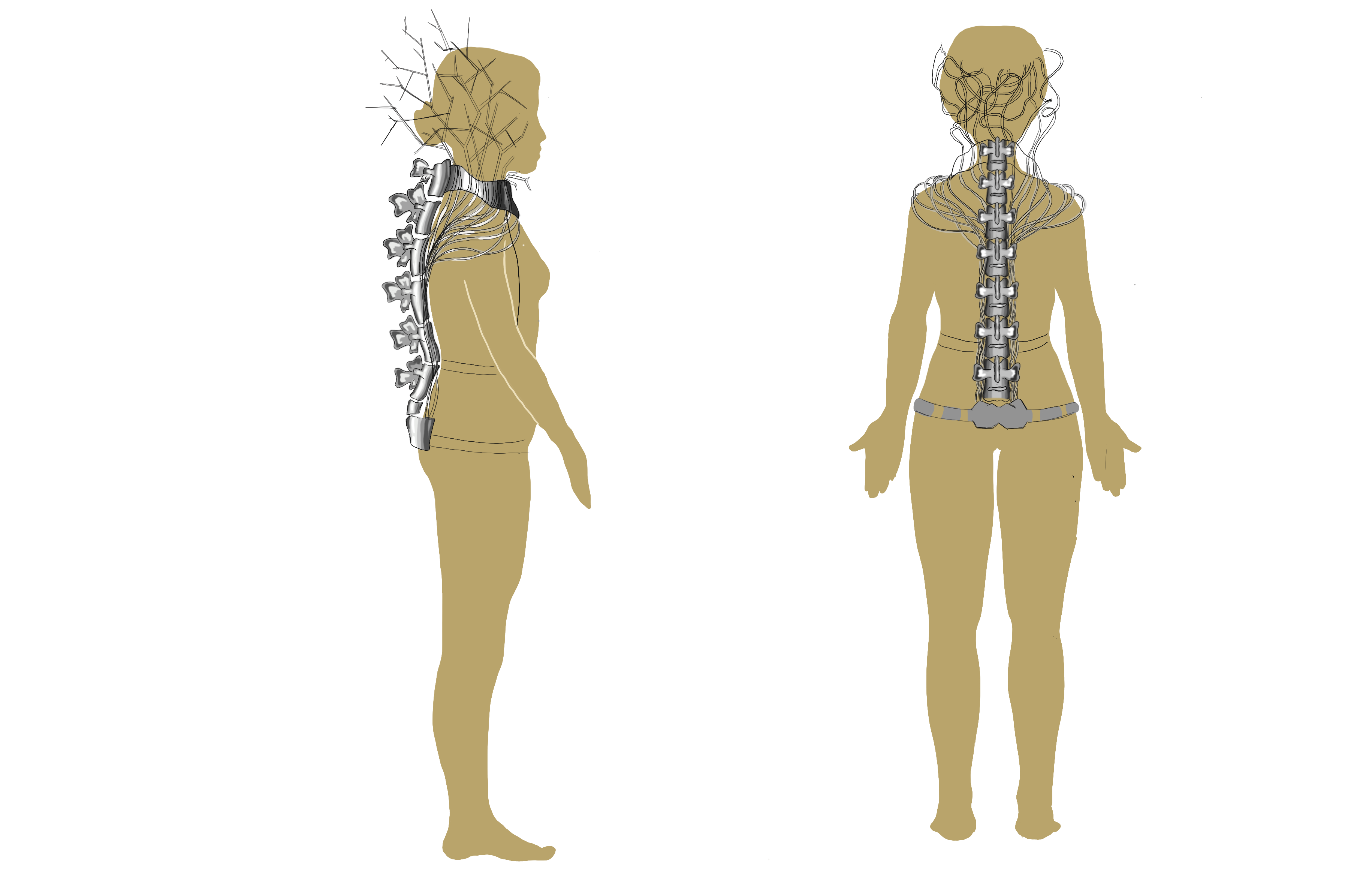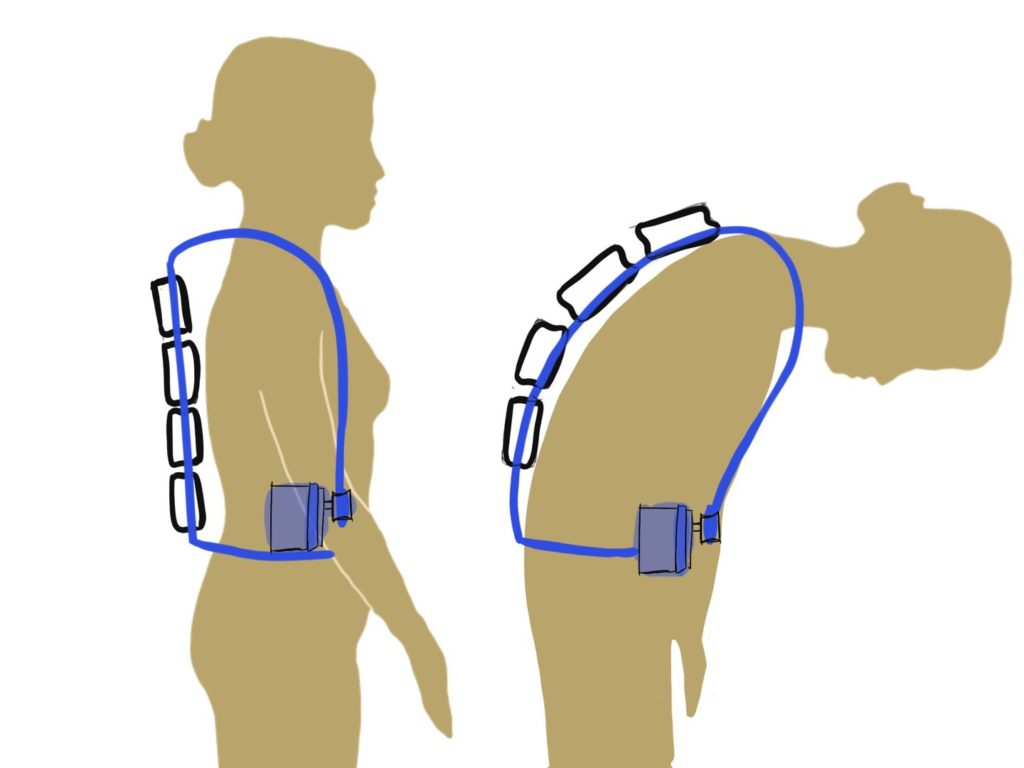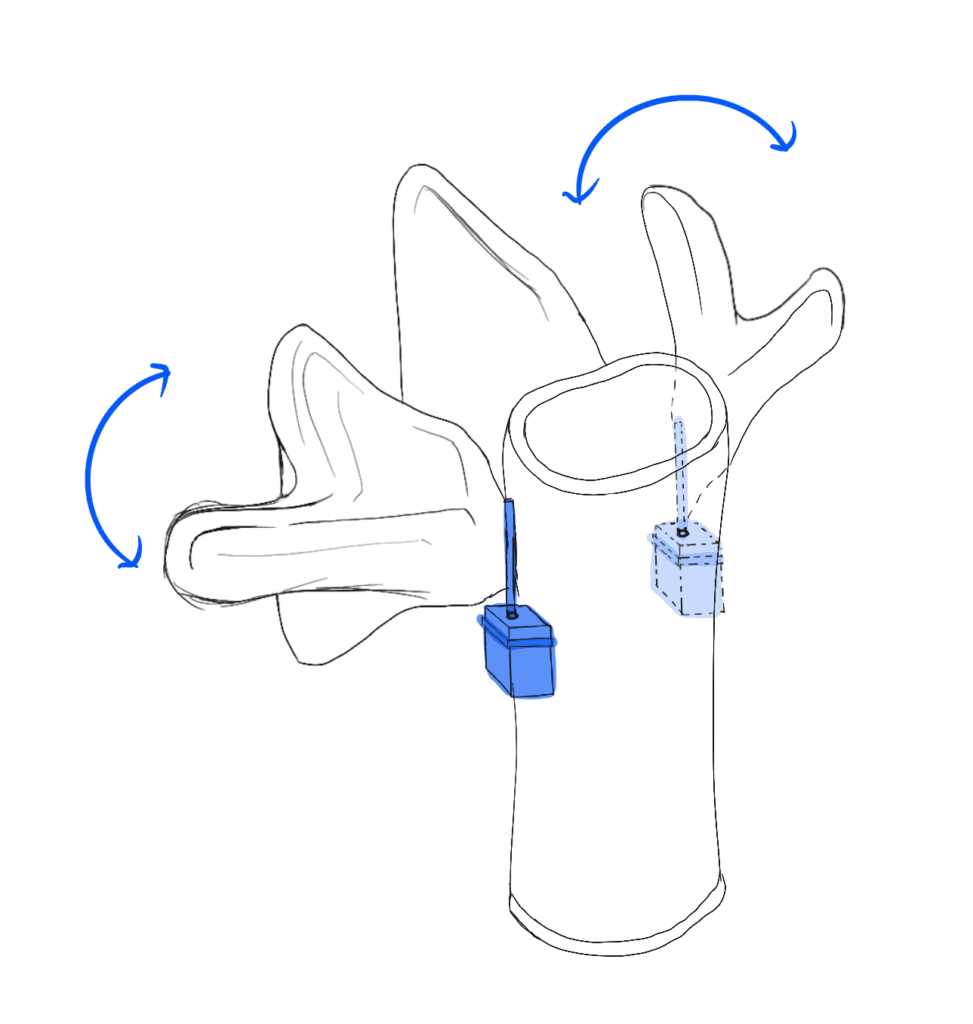Group 1
Team members: Rosanna Zhou, Shiyuan Tian, Liuliu Zhou, Jiapei Yao

Description of the Project
The project “Descendent of the Desert” is a wearable interactive art installation based on our speculation on how future humans can adapt to the environment to make their living in the desert. We aim to present a new human biomorph that enables us to survive in the desert without taking refuge from the physical dependencies, like the house or tent we usually depend on for a living. Desert animals’ adaptations and accommodations to the barren and fervent environment are taken as references of how we think humans should take their step of evolution. We want to provoke our audience to think about the possible ways of human evolution and what the deterioration of the natural environment will bring to the humankind.
Project Design
Visually speaking, we adopted the form of exoskeleton that is commonly seen on desert arthropods such as scorpions and camel spiders. We adopt this feature because the exoskeleton can protect these animals from exterior attack, the sun’s harsh rays, and turbulent winds and debris from sandstorms. It could also minimize water loss. Simultaneously, we also adopted the form of the vegetation in the desert as the headwear because these vegetations are crucial resources for animals to stay away from the heat.
We also took many inspirations from the desert to develop our interactions. The interactions of our project mainly consist of three parts: the bending of the whole skeleton, the movement of the two pieces on each of the skeletons, and the animation of the light strip.

- The curving motion of the “spine”
- Interaction design: When the intensity of light in the surrounding environment reaches a certain threshold, the spine will curve, which forces the person to bend down and rest. This interaction is designed to imitate how the animals in the desert would hide themselves in the barren or find shaders in order to adapt to the intense sunshine in the desert, which scenario is expected in our speculative future. Thus, in our project, the person is forced to adapt to the intense sunshine (the intensity of light of the environment) and implement the position of rest (the bending position).
- Technical implementation: There is a light sensor and two motors to control the bent and straight of the exoskeleton. We are going to use the light sensor to detect the lightness of the day, and when it reaches the threshold we set, the motor on each side of the user will start working, which will in turn tighten the rope in the exoskeleton and bend it.

- The movement of the two pieces of each bone
- Interaction design: There are also two pieces on each skeleton that swing left and right like wings according to the person’s movement intensity. The faster the person moves, the faster and more intense the two pieces swing. This movement of the two pieces is to simulate the function of heat dissipation, which is a function essential for all species in the desert because of the hot nature of the desert.
- Technical implementation: There’s an accelerometer and several motors that control the pieces on the exoskeleton. The accelerometer will detect the movement of the user and show us the intensity of the user’s movement. The more intense the movement is, the faster and more obvious movements will be shown on the exoskeleton. The movement of the exoskeleton is triggered by the motors inside.

- The animation of the light strip
- Interaction design: There are also several tubes containing LED strips where the light seems to be transforming upwards. This feature is to mimic the transportation of nutrition and water, which is crucial for the survival of all species. Especially for species living in the desert, staying hydrated and filled with rich nutrients is key to survival. Thus, we added this feature to our device.
- Technical implementation: The LED light strip will be animated as lights going in up to simulate the transportation of nutrients
As it is clear in our demonstration, our visual and interaction designs are all based on the habits of animals in the desert and combined with some analysis of how these features could be adopted by us humans.
Project Implementation Plan
Job Distribution:
Rosanna Zhou:
- Modeling and 3D printing of the spine
- Help with the interaction of the curving movement of the spine
Shiyuan Tian:
- Light sensor + curving movement of the spine
Jiapei Yao:
- Accelerometer sensor + movement of the two pieces on each skeleton
Liuliu Zhu:
- Light strip animation
- Help with the movement of the two pieces on each skeleton
Time table:
| Time | Due | Work |
| Week 9 (Oct 31- Nov6) | Finish all the codings of the 3 parts + Finish 3D modeling | |
| Week 10 (Nov 7 – Nov 13) | Finish the rest of the prototype + Print out all of the spine segment | |
| Week 11 (Nov 14 – Nov 20) | Nov 16th Prototype Due | Test on the curving movement with spine pieces + Try connecting with multiple sensors + Finish assembling everything together |
| Week 12 (Nov 21 – Nov 27) | Nov 21st StoryboardNov 26th Field Trip | Storyboard design + Work on the headwear + Final improvement of the project (wear on people) |
Current Progress
We are currently still in the preparation stage. We have found some resources and tutorials that we can refer to. For example, we have set our basis for the fabrication part of our project.
The main part of the fabrication in our project is the exoskeleton of the vertebral column on the back. It is composed of more than 6 pieces of “bones”. Each bone is made of a cylinder-shaped main part and three ‘metal’ bone pieces. We are going to make the cylinder through 3D modeling and 3D printing, and the metal pieces through laser cutting. We have started building the 3D model of the cylinder shape and started designing the metal bones. But we are still thinking about how we can connect several parts together and make it work like the vertebral column of a human.
Here is a 3D model of the human spine downloaded from Sketchfab. We’ll manipulate this model so that it could better fit our project.
We also found a reference tutorial to make the animation of the light strip:


